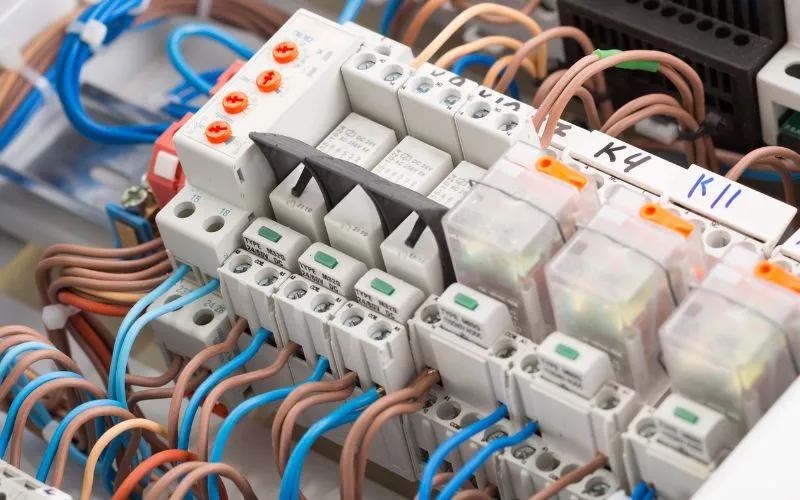
In the world of power electronics, cycloconverters are a fascinating and versatile technology. These devices provide a unique ability to convert electrical energy from one frequency to another, making them indispensable in numerous industrial applications. In this comprehensive guide, we delve into the world of cycloconverters and explore their types, operating principles, and diverse applications.
Introduction to Cycloconverters

Cycloconverters are advanced electronic devices that change the frequency of alternating current. Unlike traditional frequency converters, they offer a direct and efficient way to convert one frequency to another. These versatile devices find application in various industries due to their precise frequency control capabilities.
What is a cycloconverter?
A cycloconverter is an electronic device that converts alternating current (AC) at one frequency to alternating current at a different frequency. Unlike traditional frequency converters that use rectification and inversion stages, cycloconverters perform this conversion directly, making them highly efficient for certain applications.
Why do we need cycloconverters?
Cycloconverters are used when precise control of the output frequency is essential. They are particularly useful in industries that require speed control of electric motors or power conversion for specialized machines.
Cycle Converter Basics
The heart of a cycloconverter is a complex arrangement of thyristors that allows controlled switching and therefore precise frequency conversion. This basic scheme minimizes power losses and results in high overall efficiency. Cycloconverters are known for their robust design and reliability, making them suitable for demanding industrial environments.
Basic diagram of the cycloconverter
The basic scheme of a cycloconverter consists of several thyristors that are intrinsically connected to each other and allow controlled switching of power devices to achieve the desired output frequency. These devices work in synchronization to perform frequency conversion.
Characteristics of cycloconverters
- Precise frequency conversion : Cycloconverters allow precise control of output frequency, making them ideal for applications that require variable speed drives.
- high efficiency : Its direct conversion approach minimizes energy losses and results in high overall efficiency.
- Robust and reliable : Cycloconverters are known for their robust design and reliability, making them suitable for industrial environments.
Types of cycloconverters

Cycloconverters come in two main types: boost and buck converters. Boost cycloconverters increase the output frequency from a lower input frequency, while buck cycloconverters reduce the output frequency from a higher input frequency. These variants are suitable for different applications and allow flexibility in power conversion.
Boost Converter
Boost converters are designed to increase the output frequency from a lower input frequency. They are often used in applications where an increase in frequency is required for efficient operation.
Buck Converter
In contrast, buck converters are configured to lower the output frequency from a higher input frequency. These converters are used when a reduction in frequency is required for certain applications.
Operating principles
Cycloconverters work on principles that depend on input and output configurations. Single-phase to single-phase cycloconverters are used for single-phase systems while three-phase to single-phase converters and three-phase to three-phase converters are used for accurate frequency conversion in their respective configurations. These principles are fundamental to understanding how cycloconverters work.
Single-phase to single-phase cycloconverter
Single-phase to single-phase cycloconverters are used in converting power between single-phase AC systems at different frequencies. They can be found in devices and systems that require variable speed control.
Three-phase to single-phase cycloconverters
These cycloconverters convert power from a three-phase AC power supply to a single-phase AC output at a different frequency. They are often used in industries where single-phase equipment is required but the main supply is three-phase.
Three-phase to three-phase cycloconverter
Three-phase to three-phase cycloconverters are used when precise frequency conversion is required for three-phase systems. Industries such as manufacturing and aerospace often rely on these converters for motor control and other applications.
Applications of Cycloconverters

Cycloconverters are used in many industries where precise frequency control and efficient power conversion are required. They are essential for industrial motor drives, frequency conversion in communication systems and improving performance quality in critical applications. Their versatility makes them relevant to different sectors.
Industrial engine drives
Cycloconverters are essential in industrial motor drives where precise control of motor speed and torque is essential. These converters enable efficient operation and precise control in manufacturing, robotics and HVAC systems.
Frequency Conversion
Cycloconverters are ideal for applications that require converting energy from one frequency to another. They are used in devices such as radar, communications and medical devices where frequency synchronization is crucial.
Improving power quality
Cycloconverters can improve power quality by eliminating harmonic distortions and voltage fluctuations. They are used in industries where it is crucial to maintain a stable and clean power supply.
advantages and disadvantages
The advantages of cycloconverters include precise frequency control, high efficiency, and robust design. However, their complex configuration and limited suitability for certain applications are significant disadvantages when using these devices.
Advantages of using cycloconverters
- Precise frequency control : Cyclo inverters offer precise and flexible frequency control and are therefore suitable for a variety of applications.
- high efficiency : Its direct conversion approach minimizes energy losses and results in high efficiency.
- Robust design : Cycloconverters are known for their durability and reliability in demanding industrial environments.
Disadvantages and limitations
- Complex design : Due to the complex configuration of thyristors and associated circuits, the design and maintenance of cycloconverters is challenging.
- Limited to certain applications : Cycloconverters are best suited for applications that require precise frequency conversion and are unsuitable for all power conversion needs.
Conclusion
In summary, cycloconverters are a fascinating and valuable technology in power electronics. Their ability to provide accurate frequency conversion, high efficiency and reliability makes them indispensable in various industrial applications. Understanding the types, operating principles, and applications of cycloconverters can help engineers and professionals realize their full potential in power systems and controls.
Common questions
How does a cycloconverter work?
Cycloconverters use controlled thyristor switches to create specific phase angles in the output waveform, resulting in the desired output frequency.
What are the main advantages of using cycloconverters?
The main advantages of cycloconverters include precise frequency control, high efficiency, and robust design suitable for industrial environments.
Are there any limitations with cycloconverters?
Yes, cycloconverters have limitations, including their complex design and suitability for specific applications. They may not be the best choice for all power conversion needs.
Related articles
- Principle of electronics
- What is an oscillator in electronics?

